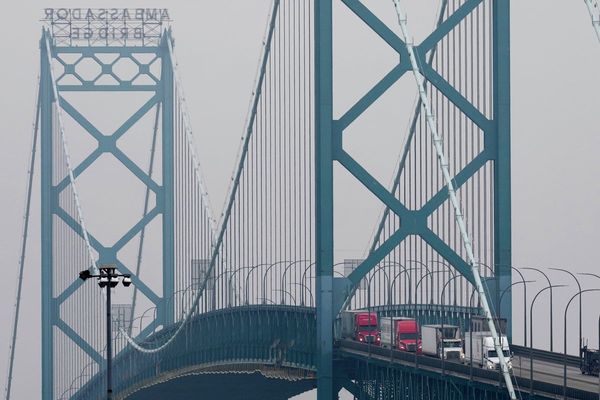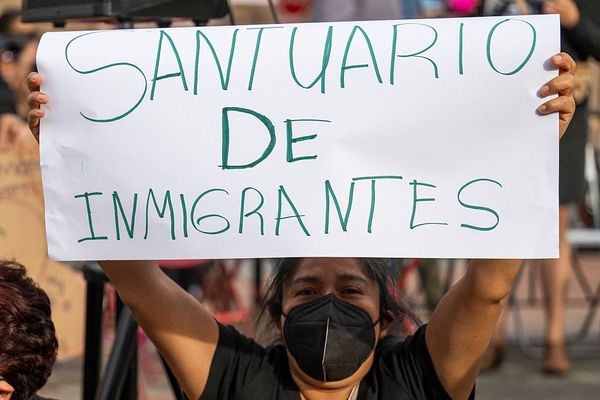
Democrat-backed liberal judge Susan Crawford won a seat on Wisconsin’s Supreme Court on Tuesday, after a closely watched race that became a proxy battle between President Donald Trump’s administration and the opposition.
The contest also became a litmus test of the political influence of Trump and Elon Musk, his ally and the world’s richest man, who poured millions of dollars into supporting Crawford’s opponent, Republican-backed conservative Brad Schimel.
Here is what happened and why it matters:
Susan Crawford wins Wisconsin Supreme Court election
There are seven judges in the Wisconsin Supreme Court. Until last year, four of them leaned liberal and three, conservative. Then, one liberal judge announced retirement, leaving one seat empty and prompting the vote on Tuesday.
The federal and state Supreme Courts are supposed to be non-partisan and not aligned with either party. However, there are liberal judges, backed by the Democrats, and conservative judges, backed by the Republicans – and often, they vote predictably, along ideological lines.
“While we like to think that judges are politically neutral and that politics does not affect them, the reality is that politics does matter,” David Schultz, a professor of politics at Hamline University in Saint Paul, Minnesota, told Al Jazeera.
That is why both parties try to stack higher courts with those they believe will endorse their policies.
The race in Wisconsin was between county judge Crawford and the state’s former Republican Attorney General Schimel, who is also a county judge.
Crawford won the election, maintaining the court’s four-three liberal majority. She held a 10-point lead over Schimel, with 98 percent of the votes counted, according to The Associated Press news agency, at last count. The AP declared the race in Crawford’s favour.
Trump won Wisconsin in 2024 presidential election
Wisconsin was a swing state in the November 2024 election and Trump defeated Democrat former Vice President Kamala Harris by a narrow 0.8 percentage points.
Trump’s win was significant because Wisconsin was considered a blue wall state, reliably won by Democrats in modern United States history. From 1992 to 2012, Wisconsin had always voted for Democrats in presidential elections. In the 2016 election, Trump flipped Wisconsin alongside other blue wall states Pennsylvania and Michigan, all three of which were won back by former Democratic President Joe Biden in 2020. Trump won the three states again in November last year.
Ahead of the Wisconsin vote, Schimel earned an endorsement from Trump. On March 22, Trump posted in support of the conservative candidate on his Truth Social platform.
“Brad Schimel is running against Radical Left Liberal Susan Crawford, who has repeatedly given child molesters, rapists, women beaters, and domestic abusers ‘light’ sentences,” Trump wrote, without any evidence to back his accusations. He called Crawford “the handpicked voice of the Leftists”.
“All Voters who believe in Common Sense should GET OUT TO VOTE EARLY for Brad Schimel,” Trump wrote.
Big loss for Musk in costliest judicial race
Musk and political groups associated with him spent about $18m to support Brad Schimel, according to Al Jazeera’s analysis, based on funding details collated by the Brennan Center for Justice. Musk also paid $1m each to three voters for signing a petition opposing “activist judges” – bringing the total spending by the billionaire and his groups to $21m.
The groups affiliated with Musk include America PAC, which Musk formed in May 2024 to help Trump with his presidential campaign, and Building America’s Future, which is funded by Musk.
The owner of Tesla and SpaceX rose to prominence during Trump’s presidential campaign last year and currently handles the cost-cutting Department of Government Efficiency (DOGE), which has been laying off tens of thousands of federal employees.
Crawford, and the Democrats who backed her, used Musk as an argument in her campaign, alleging that the billionaire was “buying” the election. The Tuesday race broke the record for the costliest judicial race in US history.
The overall spending on this race was close to $99m, according to a tally by the Brennan Center for Justice. Previously, the record was held by the state’s Supreme Court race in 2023, where $51m was spent.
According to the Brennan Center, Crawford spent $28m herself as a candidate, while Schimel spent $15m. But both also received significant funding from allies. If Musk and his groups backed Schimel’s candidature, several wealthy liberal donors funded Crawford’s campaign, including billionaire Illinois Democratic Governor JB Pritzker. “Elon Musk is not good at this,” Pritzker wrote in an X post as results were coming in, pointing to Crawford’s win.
In all, Crawford’s campaign accounted for more than $45m of the total $99m expenses on the race, while $53m was spent on Schimel’s candidature.
Musk, who spent about $250m to help Trump during his presidential campaign, promised to pay volunteers $20 for each voter they recruited before the Tuesday vote. He also offered voters $100 in exchange for uploading a picture of anyone gesturing thumbs up while holding Schimel’s photo.
Additionally, Musk held a campaign rally for Schimel in Wisconsin’s Green Bay, where some 2,000 people showed up. However, in Brown County, home to Green Bay, Crawford defeated Schimel. Trump had won in this county in the presidential election by 7 percentage points.
Musk has not made any public comments yet on Crawford’s election win.
Voter ID amendment approved by Wisconsin voters
Musk, however, posted on X about how an amendment adding a voter ID requirement to Wisconsin’s constitution had passed. “This was the most important thing,” he wrote.
This was the most important thing https://t.co/x99NunhUkA
— Elon Musk (@elonmusk) April 2, 2025
For nearly a decade, state law has required photo IDs for voters, but having it enshrined in the constitution makes it even more difficult to roll back the rule.
Conservatives have pushed for the amendment across the country, arguing that it will prevent voter fraud. Democratic leaders have opposed this amendment, arguing it will dissuade certain voters, such as students, older voters and Black voters. According to a Brennan Center fact sheet, studies prove that non-white people are less likely to carry their ID to polls. Democrats have long counted on people of colour as a major support base.
“A lot depends on how mobilised voters are, how prepared voters will be to get those IDs … and how the current or new Wisconsin Supreme Court majority will interpret the amendment,” Schultz said.
Jill Underly re-elected as Wisconsin’s state superintendent
Separately, Democrat-backed Jill Underly defeated Republican-backed Brittany Kinser to continue leading the state’s Department of Public Instruction.
The department is responsible for handling public education in the state.
Underly’s win comes days after Trump signed an executive order to dismantle the Department of Education, making education a responsibility of the states rather than the federal government.
Why was the Wisconsin Supreme Court race so important?
Tuesday’s vote was the first significant election in the country since November, serving as a test for Trump’s presidency and for his influence in the swing state.
The election was also a test of the extent to which Musk could use funding to influence the results.
“This election was viewed as a referendum on Donald Trump and of course, Elon Musk,” said Hamline University’s Schultz.
Schultz added that the results suggest that the influence Trump and Musk wield over American society and voters is “not as strong or as deep as one may think or as they may think”.
The results may also point to how “all politics truly is local, and that it was a race all about two candidates and state issues and not necessarily about Trump and Musk,” said Schultz.
The electoral verdict has also determined who holds ideological control of the state’s Supreme Court. This matters because the Supreme Court will have an important role to play on policies involving issues such as reproductive rights and redistricting, said Schultz.
Redistricting refers to the redrawing of boundaries of an electoral district. At times, politicians redraw these maps to give themselves a political advantage. This is called gerrymandering.
The Wisconsin vote is nationally significant because it determines “whether the Republican legislature will have the power to gerrymander its legislative and congressional districts for Republican advantage,” said Michael Kang, an election law professor at Northwestern University’s Pritzker School of Law.
“Wisconsin is a swing state, so everything that happens politically there is magnified and has potentially national implications.”







